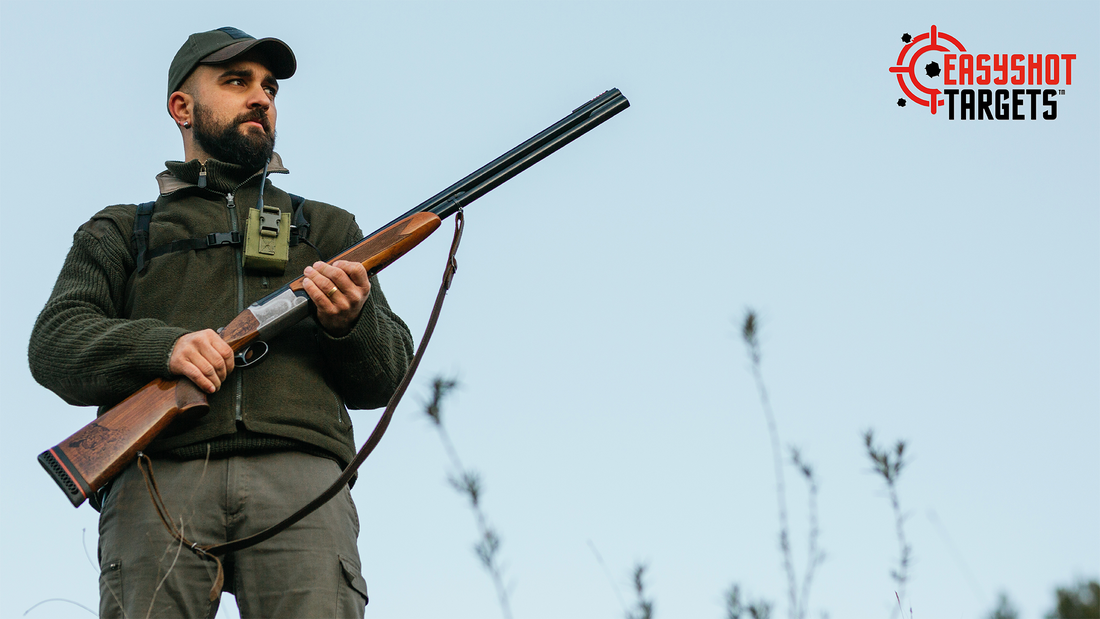Shooting is a sport that requires focus, concentration, and accuracy. One of the most important factors in achieving this is having the correct fit for your shotgun. A poorly fitting shotgun can cause discomfort, injury, and decreased accuracy.
In this blog, we will discuss the process of shotgun fitting to ensure that you have the best shooting experience possible.
Step-by-Step Guide to Getting the Right Shotgun Fit
Finding the proper gun fit can be challenging, especially if you're purchasing an off-the-shelf shotgun. If you have never fitted a shotgun before, here's a step-by-step guide on how to do it:
1) Adjust the Length of Pull (LOP)

Credit: Envato Elements/ vlad_star
The first step in getting the proper fit for your own gun includes adjusting the length of pull (LOP), which is the stock length or the distance from the trigger to the end of the gun stock. If the length of the pull is too long or too short, it might inhibit gun mount and accuracy.
To adjust the length of pull to get a proper fit, you have several options:
- Add or Remove Spacers: Most shotguns come with removable spacers that can be added or removed from the butt of the stock to get a proper length of pull. To do this, just detach the butt-plate, adjust the spacers as necessary, and then screw it back on.
- Shorten the Stock: If you need a significant reduction in the length of pull, you may need to have the stock shortened. This should be done by a professional gunsmith, as it can impact the overall balance and handling of the shotgun.
- Add a Recoil Pad: Adding a thicker recoil pad can increase the length of the pull, making the shotgun more comfortable to shoot. This can be done by a gunsmith or by purchasing a replacement recoil pad.
2) Adjust the Cheek Weld

Credit: Envato Elements/ Vailery
Another important aspect of fitting a shotgun is ensuring a proper cheek weld. The cheek weld refers to the way the shooter's cheek contacts the stock of the shotgun.
The proper placement of a cheek weld is a matter of personal preference and varies based on the type of shooting. For shooting activities that require quick target acquisition, such as sporting clays, the cheek weld should allow for a smooth and natural transition from a relaxed position to a shooting position, with minimal head movement. For shooting activities that require a more steady and deliberate aim, such as target shooting or big game hunting, the cheek weld should be more secure and stable, allowing the shooter to maintain a consistent aim for an extended period of time.
To adjust the cheek weld, you can simply add a cheek pad to the stock of the shotgun.
3) Adjust the Comb Height

Credit: Envato Elements/ karrastock
After adjusting the cheek weld, the next step is to adjust the height of it also known as the comb height. This will establish the proper sight alignment, resulting in an improved sight picture and a more precise shot pattern.
There are several ways to adjust the comb height:
- Modify the Stock: A professional gunsmith can modify the stock of the shotgun to increase or decrease the height of the comb. This is a more permanent solution but can be more expensive and time-consuming.
- Add a Comb Raiser: A comb raiser is a device that can be added to the stock of the shotgun to increase the height of the cheek rest. This is an easy and affordable way to adjust the comb height without having to modify the stock.
- Adjust the Position of the Scope or Sight: If you are using a scope or sight on your shotgun, adjusting its position may also impact the comb height.
4) Adjust the Cast of the Stock
Credit: Envato Elements/ FabrikaPhoto
In order for a shotgun to fit a shooter properly, it is essential to adjust the cast of the stock. Cast refers to the slight tilt of the stock to either side of the bore axis. A proper cast helps align the shooter's eye with the target and can improve comfort and accuracy.
There are two types of casts: cast-off and cast-on. Cast-off refers to a tilt of the stock to the right side of the bore axis and is typically used by right-handed shooters. Cast-on refers to a tilt of the stock to the left side of the bore axis and is typically used by left-handed shooters.
To adjust the cast of the stock, you have two options:
- Purchase a Stock With the Desired Cast: Many shotgun manufacturers offer stocks with either cast-off or cast-on, so you can purchase a stock that already has the desired tilt.
- Modify the Stock: Another way that you can adjust the cast of the stock is by modifying it. This can include reshaping the stock or adding material to one side to achieve the desired tilt.
Summary
Having a properly fitting shotgun is not only important for accuracy but also for consistency. Additionally, a well-fitted shotgun will make shooting more enjoyable for you, which might motivate you to practice and advance your skills.
Looking to have a successful shotgun shooting experience? Check out EasyShot. With EasyShot, you can improve your accuracy and maximize your shooting potential. Whether you're a beginner or an experienced shooter, EasyShot targets are a must-have.


